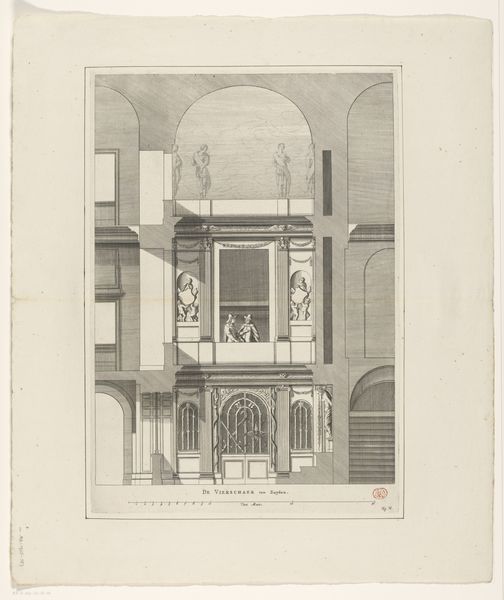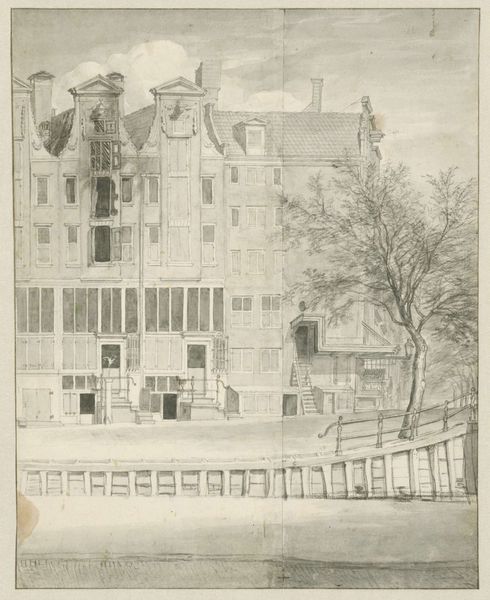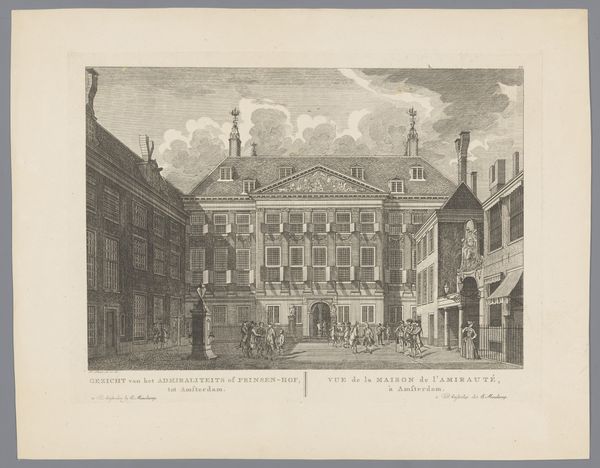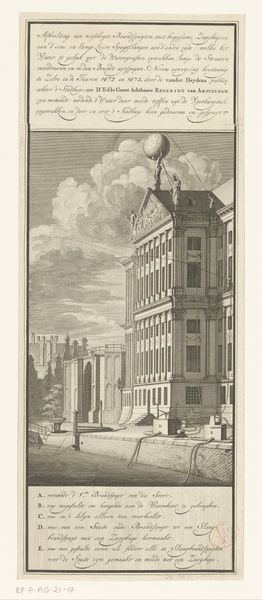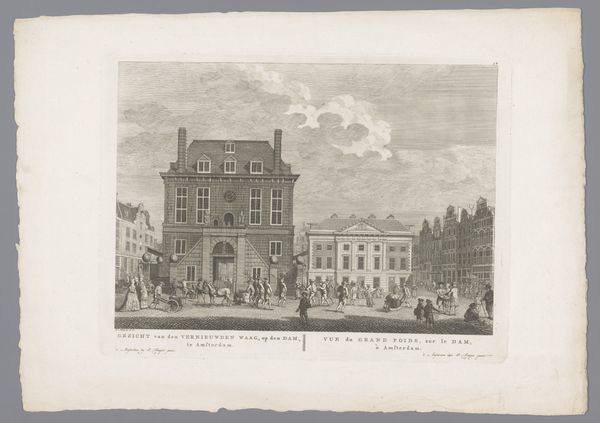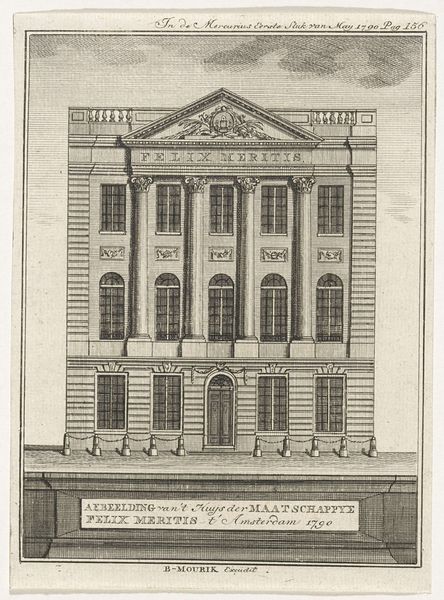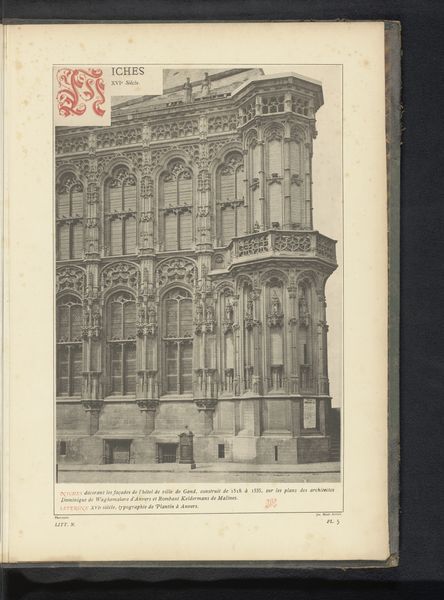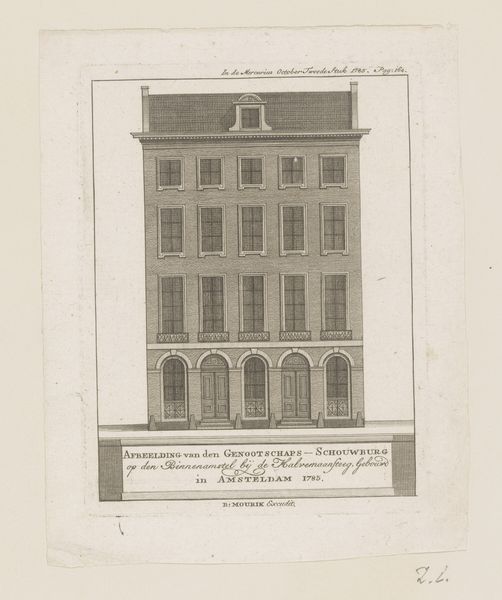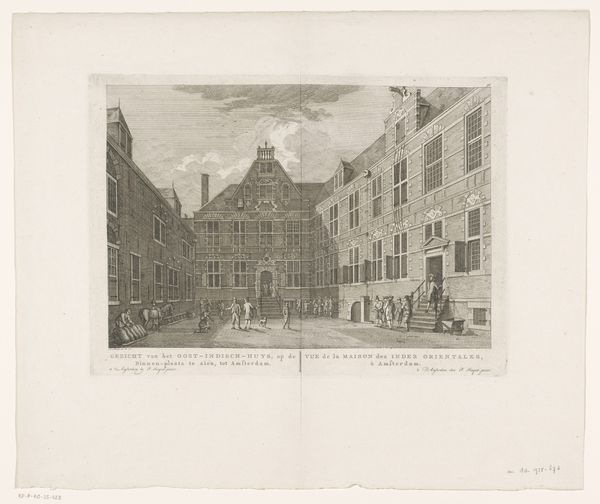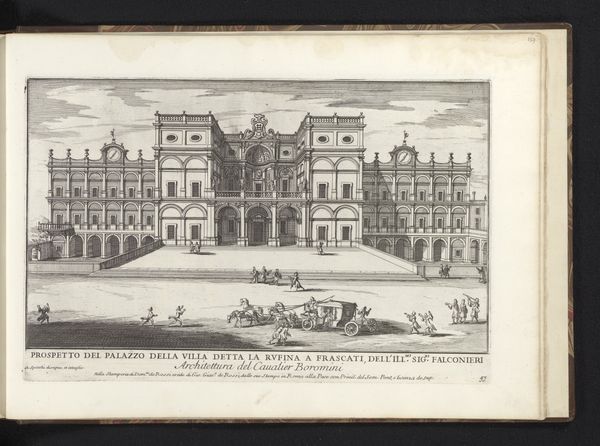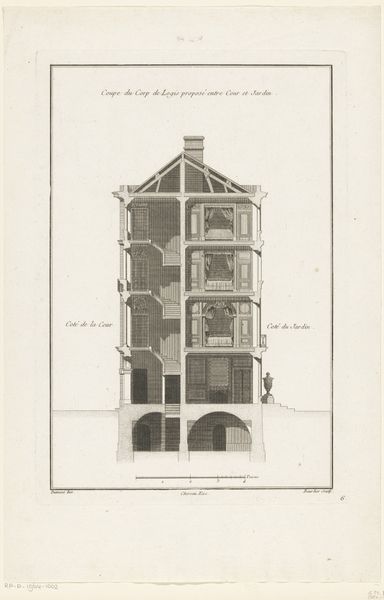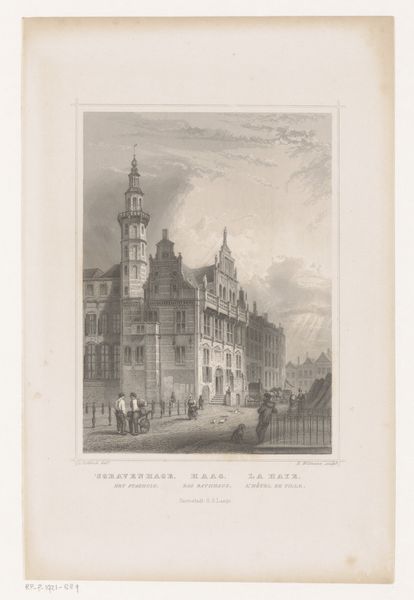
Illuminatie van het gebouw van de Oprechte Vaderlandsche Societeit te Rotterdam, 1788 1788
0:00
0:00
Dimensions: height 538 mm, width 380 mm
Copyright: Rijks Museum: Open Domain
Curator: This engraving, created in 1788 by Jacob Groenendijk, depicts the illuminated facade of the Oprechte Vaderlandsche Societeit building in Rotterdam. What catches your eye first? Editor: It has such an artificial feel. I immediately notice the crisp geometry and symmetry of the structure against that night sky. The rigid lines make it seem more like a stage set than an actual building. Curator: Interesting. I see the engraving as more of a historical document detailing how carefully crafted this elaborate display was. Note the intricate use of light, and how this contrasts against the dark engraving style. This juxtaposition highlights the illumination process itself as a key feature. Editor: Right, because there is so much more here if you put this work within its proper societal context. I'm really struck by the way it presents a very deliberate projection of power and civic virtue. The imagery speaks to Enlightenment ideals but feels almost performative in its patriotism. Curator: It does, and I find myself considering the sheer labour involved in creating such an impressive installation. Each individual light source, carefully placed, represents not only technical skill but significant resources invested in this spectacle. What's also striking to me is that it exists in the context of increasing political and economic anxiety at the time in Europe. Editor: Exactly, because consider who this spectacle would have been intended for. The meticulous artistry might aim to create a sense of unified national identity, and mask deep class divisions or social unrest that plagued Rotterdam. Curator: So it’s acting as a carefully crafted form of propaganda through orchestrated imagery? Editor: I think so. And seeing those crowds observing below in their period costumes is also crucial to grasping how events such as these played a role in shaping collective consciousness, a tangible reflection of the cultural aspirations of its time. Curator: Indeed. It is really amazing to understand the resources and the production surrounding a relatively unknown piece of history, such as the illumination of a building! Editor: Ultimately, what looks at first glance like just a historical cityscape print is loaded with political and social complexities. And its sharp details invite us to critically examine how displays of power operate within communities.
Comments
No comments
Be the first to comment and join the conversation on the ultimate creative platform.
